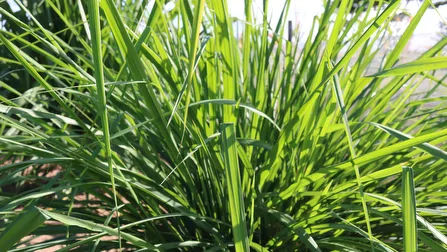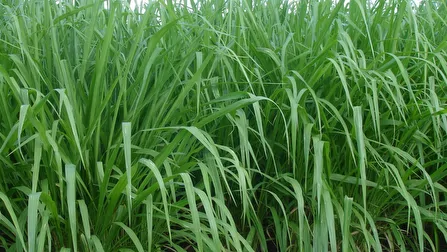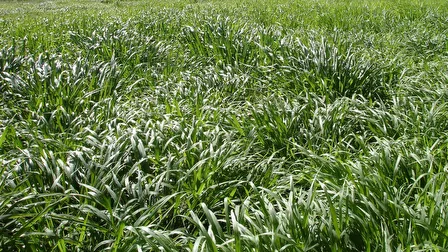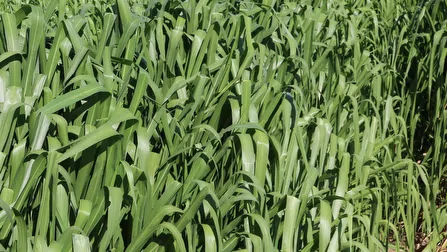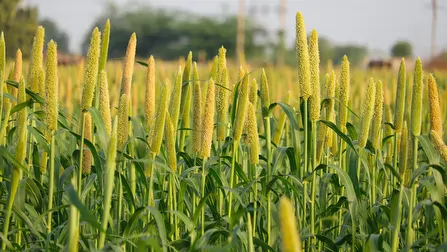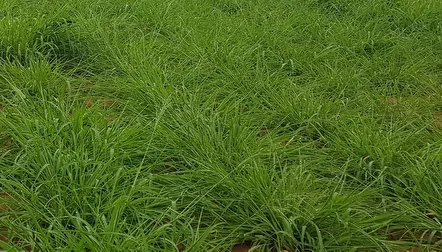
Indicação
É indicada para solos média a baixa fertilidade. Possui boa tolerância aos solos úmidos e alagados, podendo substituir a humidícola nesses tipos de regiões com a vantagem das sementes não apresentarem dormência e melhor qualidade nutricional. É recomendada para bovinos nas fases de cria, recria e engorda. Pode ser utilizada também para equinos, desde que acompanhada de uma suplementação adequada para a espécie.
Setaria sphacelata cv. Kazangula
Baixa a média fertilidade, solos com problema de drenagem e inundados
Pastejo direto
8 a 10 t/ha/ano de matéria seca (M.S.)
7 a 9%
1,20 a 1,60m
Média
Média
Média
Alta
Perene
Utilização e Manejo
A Setária é uma pastagem indicada para solos de média a baixa fertilidade, e mal drenados. Por ser tolerante a solos com umidade excessiva, vem substituído com vantagens a Humidícola em regiões pantaneiras pois suas sementes não apresentam dormência, garantindo assim um estabelecimento de pastagem mais rápido, e por possuir uma melhor qualidade nutricional. É recomendada para bovinos nas fases de cria, recria e engorda. Para alimentação de equinos, é recomendado que faça uma suplementação nutricional adequada pois apresenta alto teor de oxalato (+7% na matéria seca), que pode ocasionar a osteodistrofia fibrosa, conhecida popularmente como cara inchada.
Origem
Ecótipo nativo da República da Zâmbia e é muito utilizado na África do Sul para pastejo e fenação. Muitas pastagens de setária existentes no mundo vieram de sementes distribuídas do CSIRO (Austrália).
Características Morfológicas
Planta robusta de porte avantajado (pode chegar até 2 m). Possui boa tolerância a seca e à umidade.
Características Agronômicas
É uma espécie forrageira para solos de média a baixa fertilidade, tolera a umidade do solo até o alagamento. Boa adaptação ao frio.
